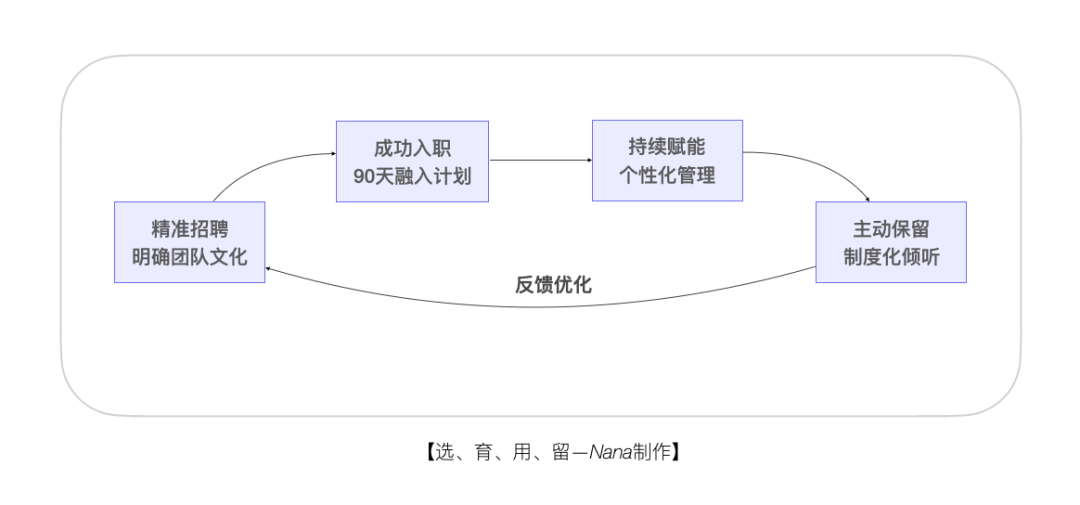Quiet Quitting: Why Top Performers Leave Silently

Creating an Inclusive Environment for Different Personality Types

When outstanding employees “quietly walk away,” it often signals deep-rooted management issues.
This article uses a real case to explore the hidden crises that drive silent resignations — and how leaders can prevent them.
---
📖 Case Background
Lin Yue, a young woman who joined the company just over five months ago (two months past her probation), emailed her resignation:
> “Personal development is out of sync with the company’s pace.”
The email was polite but firm, expressing gratitude for the company platform.
Her direct manager, Zhang Wei, was stunned:
> “How could it be her? Why now?”
During her probation review, Lin Yue had:
- Carefully summarized her achievements
- Earnestly listened to feedback
- Spoken logically despite slight nervousness
- Received unanimous praise from reviewers
Zhang Wei tried to convince her to stay, but Lin Yue was resolute:
> “I’ve thought this through. Mainly… it’s too exhausting. Too much overtime. I just can’t handle it anymore.”
Zhang Wei suspected her introverted nature made her prone to bottling up stress and unable to adapt to the team’s atmosphere.
---
🔍 Diagnosis: An Avoidable “Surprise” Exit
Lin Yue’s departure, while sudden in appearance, was the product of accumulated blind spots in management.
1. Misjudged Cultural Fit
- In interviews, her logical thinking and product sense stood out.
- Personality fit with team culture was overlooked.
- Lin Yue: introverted, sensitive, valuing harmony & deep thinking
- Team: direct, extroverted, thriving on fast decisions & intense debate
- The mismatch was seeded at hiring.
- Common manager mistake: valuing talent over fit.
2. Absence of a Safe Space Mechanism
- Five months of high-intensity overtime.
- Public “challenges” on proposals.
- Chose silence due to lack of channels for emotional communication.
- Mentorship program existed in name only; no psychological support.
- 1-on-1s focused only on project progress, not well-being.
3. Delayed Management Feedback
- Team’s aggressive style was an “open secret.”
- Zhang Wei saw it as part of the team’s energy.
- Early emotional warning signs were ignored.
- Core issue: Overemphasis on task progression, neglect of human needs.
---
🚀 Breakthrough: From “Selection” to “Development”
Build an environment where all personality types thrive.
The goal is NOT to turn introverts into extroverts, but to let them create value while staying comfortable.

---
1️⃣ Precise Recruitment: Create an Authentic Match From Day One
Step 1: Define & Communicate Real Team Culture
Action:
> Avoid sugar-coating. Clearly explain interaction styles during interviews.
> Example: “Our team is direct and efficient. Discussions can sound ‘aggressive,’ but focus is on ideas, not people.”
Purpose:
- Filters out candidates who can’t handle this style.
- Attracts those who see debates as productive.
Step 2: Assess Resilience & Adaptability
Action: Use Behavioral Event Interviews:
- “Describe working with a strong-minded colleague/manager — what did you do?”
- “Share how you managed intense work pressure.”
Purpose:
- Evaluates psychological strength & coping strategies.
---
2️⃣ Structured Onboarding: 90-Day Integration Plan
A clear plan accelerates adaptation and builds psychological safety.
Critical Retention Period:
Probation + First months after conversion = High risk of quitting → Needs focused investment.
Assign a True Mentor
Action:
- More than process guidance:
- Cultural Translator — decode team “subtext.”
- Safe Haven — first contact for confusion or stress.
Purpose:
- Prevent isolated buildup of negative emotions.
Establish a Phased Feedback Mechanism
Action:
- 1-month, 3-month, and 6-month deep 1-on-1s (customized frequency).
- Ask beyond task status:
- “Any collaboration issues or discomfort?”
- “Can you keep up with the pace?”
- “What support would help?”
Purpose:
- Detect issues before they escalate.
---
3️⃣ Continuous Empowerment: Personalized Management
Recognize work style ≠ capability.
For Capable but Conflict-Averse Employees:
Action:
- Offer varied communication channels (reports, private chats, pre-meeting emails).
- Do pre-meeting prep to boost confidence:
- “XX shared a great point earlier…” — acknowledging their contribution.
Purpose:
- Showcase deep-thinking strengths.
Regulate Team Communication Pressure
Action:
- Enforce “Focus on the issue, not the person.”
- Intervene if debates heat up:
- “Let’s pause and rethink from another angle...”
Purpose:
- Keep discussions constructive and safe.
---
4️⃣ Proactive Retention: Institutional Listening Systems
Make feedback systematic, not instinctual.
Regular Anonymous Surveys
Action: Quarterly check-ins:
- “Stress level (1–10)?”
- “Is contribution recognized?”
- “Is it safe to voice differing opinions?”
Purpose:
- Quantify emotional well-being, spot trends early.
Safe Haven Channels
Action:
- Allow confidential escalation to upper management/HR.
Purpose:
- Give introverts an outlet to speak up without confrontation.
---
🎯 Conclusion
Great managers create spaces where diverse personalities thrive by focusing on:
- Mindset: Shift from task management → energy management.
- Behavior: Replace uniform standards with personalized leadership.
- Systems: Move from reliance on instinct to structured mechanisms.
Teams that embrace differences achieve higher innovation & adaptability — and become magnets for top talent.
---
> 💡 Modern tools can help:
> Platforms like AiToEarn官网 integrate AI-powered content creation, cross-platform publishing, analytics, and feedback tools. This not only streamlines communication but strengthens cultural alignment both internally and externally.
> Explore AI模型排名 to measure and optimize creative impact.
---
———— / E N D / ————
👇 Join the Product Manager Evolution Camp — be the first to know about trends, tips, and industry insights. Grow with outstanding product pros.

---
———— / Recommended Reading / ————



---
---
I’ve rewritten this for clarity and maximum scanability.
If you’d like, I can also condense this into a one-page executive summary for busy managers. Would you like me to prepare that next?




